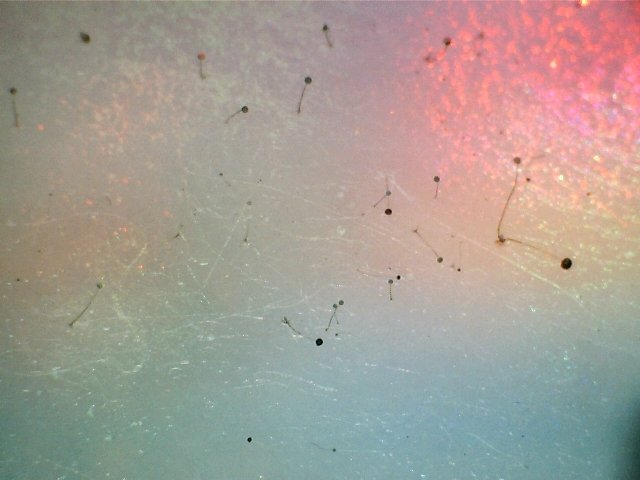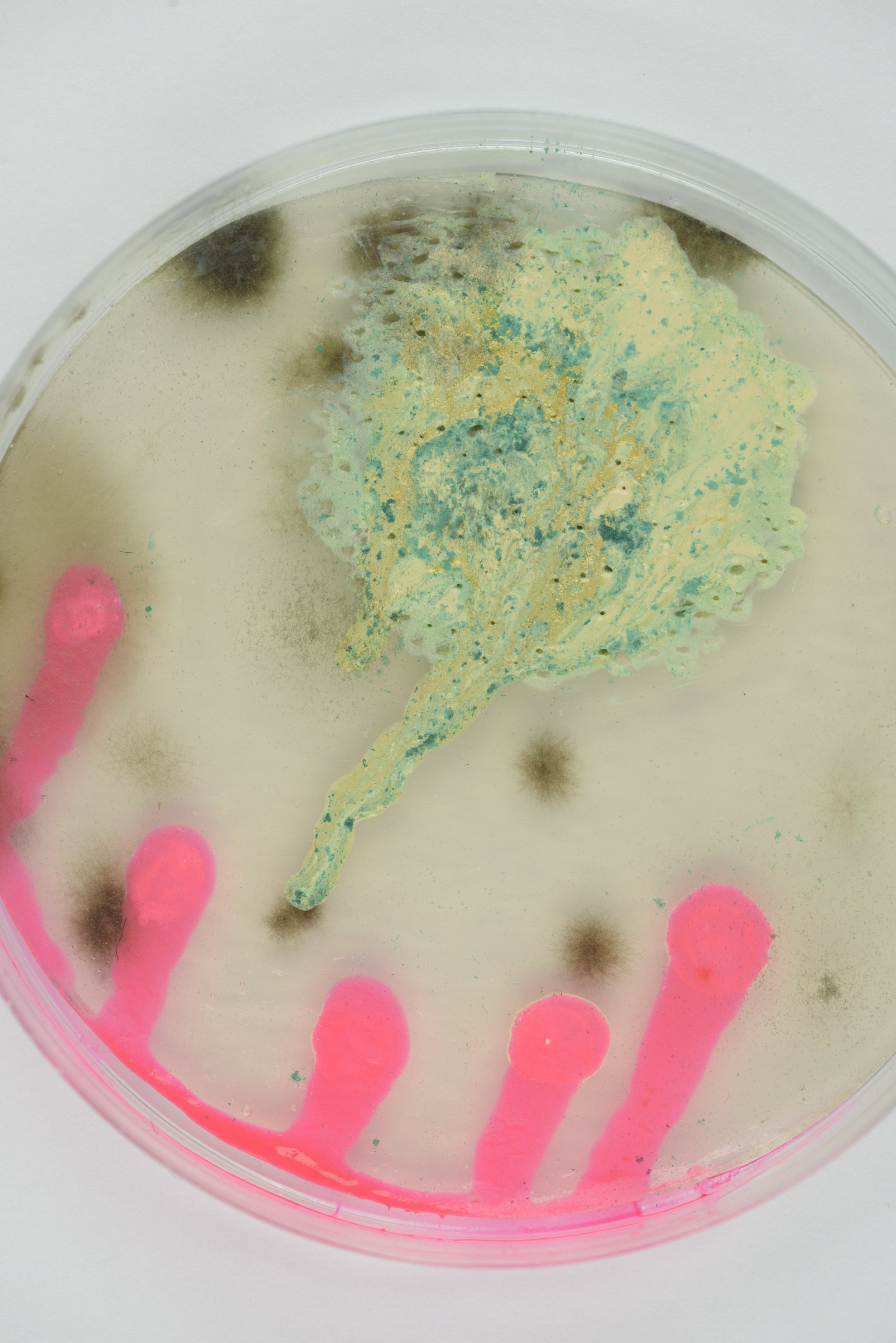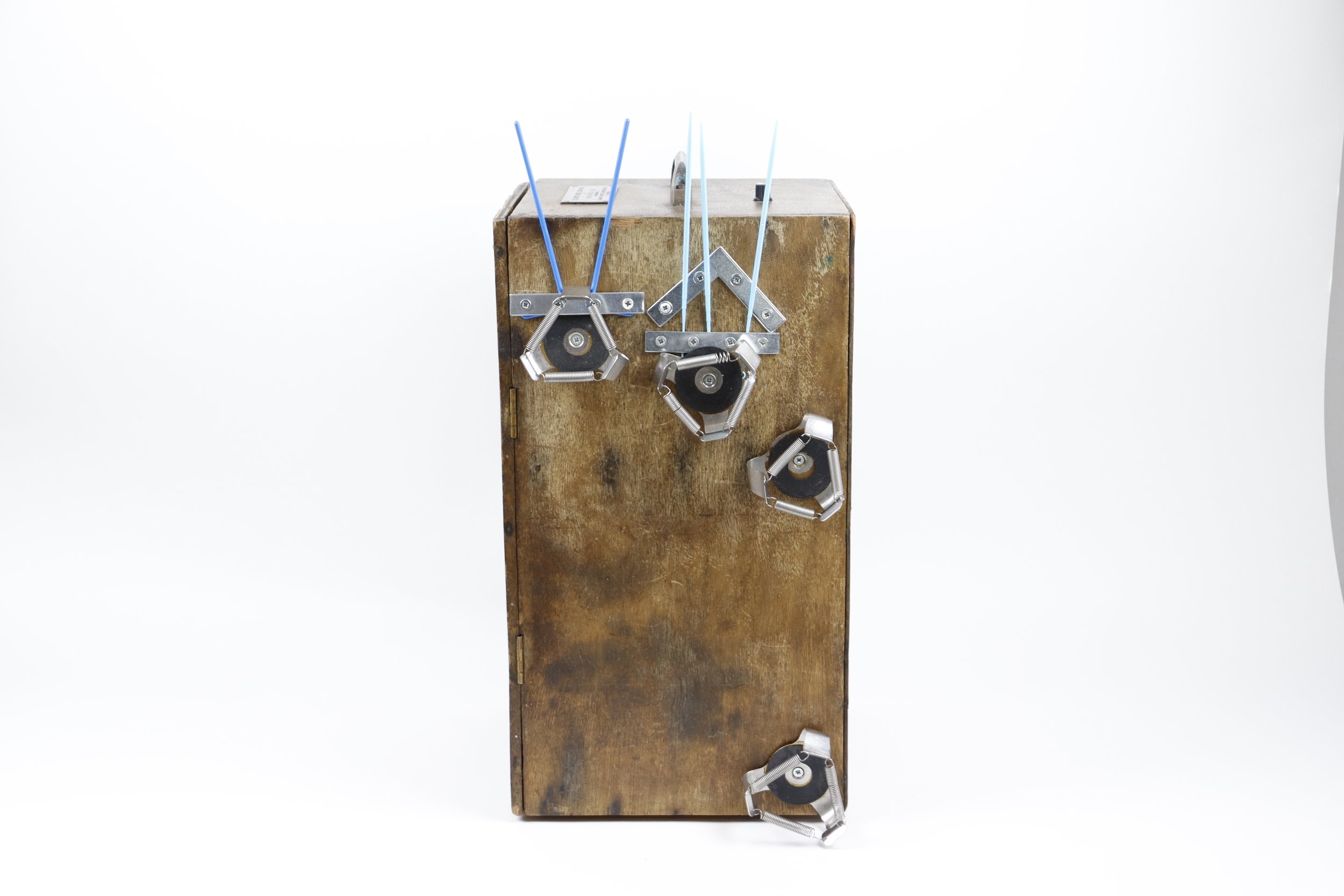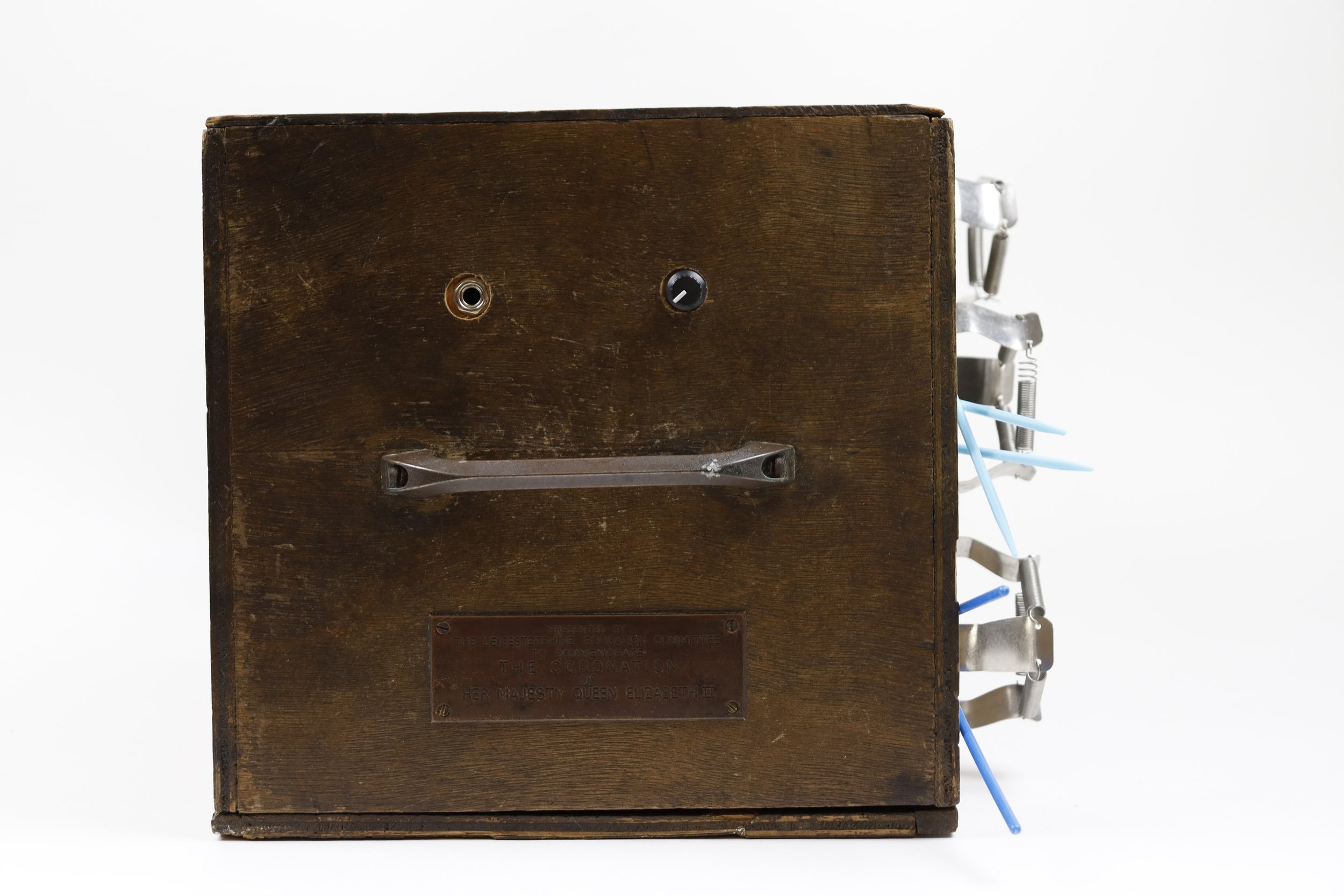
The Labophone and Lab Sounds
The Labophone
The Labophone is an experimental noise instrument made out of a microscope box, beaker holders, inoculation loops, and spreaders, with a clear space for drawings/movements. It has a piezo microphone fitted inside, to pick up vibration from the surface of the box which allows it to be connected to a mixing deck or amplifier or any other phono connection, such as the synthesiser shown on the right.
Labophone Materials
The spreaders/loops are fitted on a ‘fretboard’ made of metal joining plates/brackets from Wickes. The microscope box was purchased from Ebay. I obtained the laboratory equipment from a well timed laboratory clear-out at my place of work. I had some challenges finding the correct microphone initially, my first purchase wasn't sensitive enough.
As an instrument the Labophone is limited. The loops and spreaders have broken during use and though replaceable, each time I loosen the screws and re-tighten them it damages the wood, which will get worse over time. They are plastic designed for single use and are not the best instrument choice. The sounds captured are also quite limited, however, it becomes more interesting when the sound is fed through effects pedals to produce new sounds. Recorded sound from the surface movements worked well.
Why the Labophone?
The inspiration for the Labophone comes from a need to capture laboratory test movements - via the surface and to create a new way to make sounds with the throwaway single-use plastic items used in a microbiology laboratory. It is inspired by John Cage’s work/philosophy in its use of contact microphones, novel/experimental instruments and the valuing of sounds which could be considered the noise of the laboratory. It’s also fun.
How to Play a Labophone
Total Viable Count Petri dish movements recorded via the Labophone into the OP-1 synthesiser
The loops and spreaders can be played in a similar way to a kalimba. The Labophone surface is used to pick up the sounds and motions of microbiological tests and movements or activations as described above. These sounds can then be recorded into MIDI keys or further manipulated through effects pedals.
Petri dish sample as MIDI keys played as a C Major 7th chord in the pattern of a bacterial growth curve

Laboratory Sounds
Field Recordings: sounds from the Lab
I wanted to incorporate sounds from the laboratory environment, such as electronic equipment like automatic pipettes, colony counters and balances. I recorded these sounds using GarageBand, an app on my iPad, to further manipulate them using MIDI.
Initially, I was mostly interested in the various beeps made by the equipment, but later found that the quieter sounds in between the beeps were more interesting. The beep noises themselves could be quite shrill and so I limited how used them in the music.
The links below are to field recordings of microbiological laboratory sound recordings.
Collaborator: James Goodison
I am part of a group of artists based at the Fairfield and Howley Neighbourhood hub, also known as “The Old School” called the Iron Shed artists. James is a musician based in the centre and has a music studio within the building, including mixing deck, sound effect pedals, speakers, microphones. and recording software, Ableton Live. Some of this equipment is shown below. James’ experimental music band is called Klaut, so I refer to it as the Klaut studio.
James was happy to collaborate and we spent several sessions in the studio experimenting with making different sounds with laboratory equipment, playing the Labophone through effects pedals and recording Tenori -on tracks.
My daughter Lauren experimenting with making sounds
Looping sounds through the speaker in the studio
Sound of a growth curve drawn on a stylograph
The petri dish sounds of a total viable count test, these sounds are really familiar to me as it is repetitive work I performed when working in a food testing laboratory
Photos, by me of the equipment in the Klaut studio














